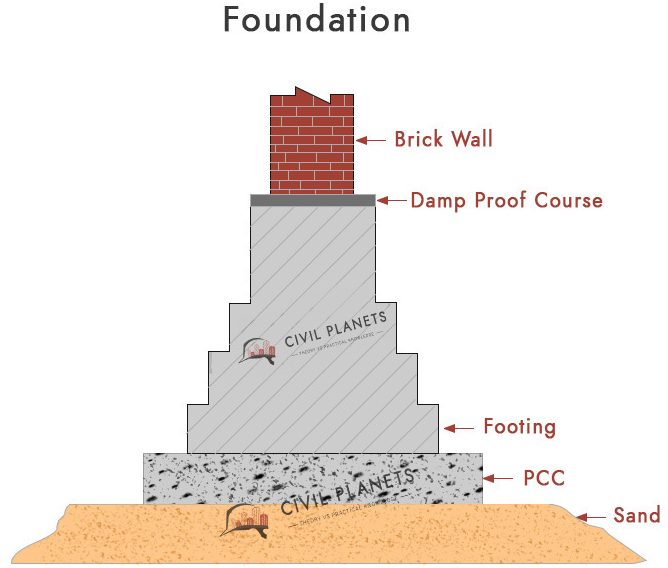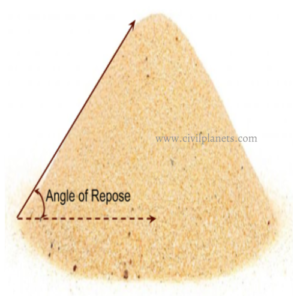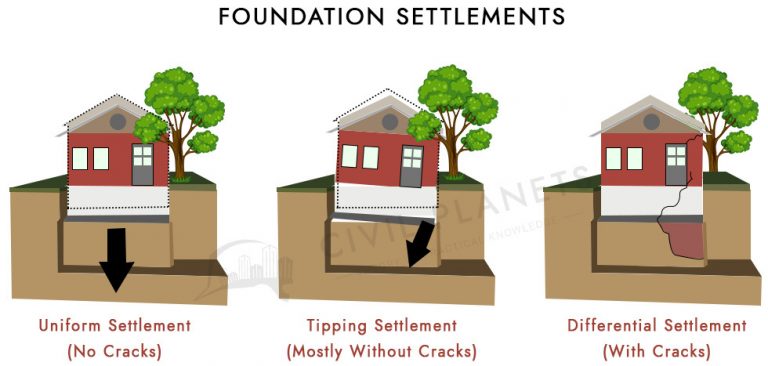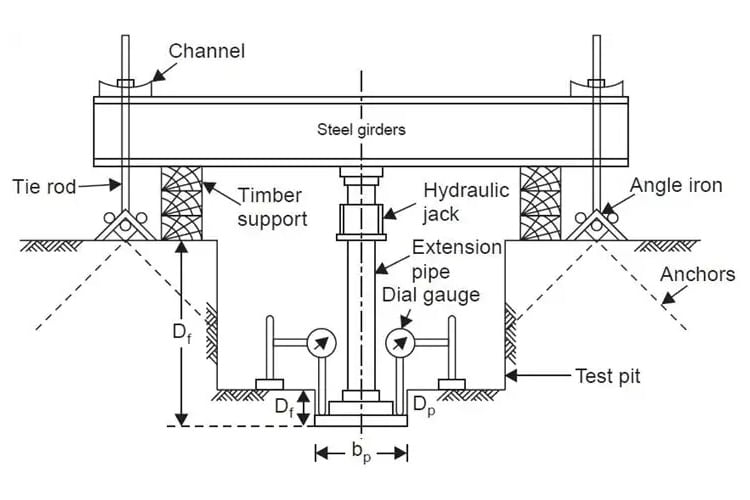Foundation depth is the most important calculation in the whole structure. Everyone knows there are two broad categories of foundation in construction.
- Shallow foundation
- Deep foundation
But do you know why the foundation method differs from others?

It all depends on various factors. Here we are going to see
- Factors affecting the depth of the foundation
- Minimum depth of foundation formula by Rankine’s
- What is the angle of repose?
- What is bearing capacity of soil?
Factors affecting the foundation depth
While designing the foundation depth of a structure following factors plays a vital role.
- Bearing Capacity of Soil (Load Resisting Capacity)
- The density of the soil
- Water table level
- Self-weight of the structure (Dead Load)
- What would be the live load? (Assumption)
- Wind load & seismic load (Earthquake)
Minimum Depth of Foundation by Rankine’s Formula
The minimum depth of the foundation formula was invented by Rankine which focused on the soil characteristics.
Rankine’s Formula
Df = P/ γ (1-SinႴ/1+SinႴ)2
Df – Minimum depth of foundation in meters
P – the Bearing capacity of the soil in KN/m2
γ – Density of soil or the unit weight of the soil in KN/m3
Ⴔ – The angle of repose soil
Before getting into example calculation. Let’s know about the bearing capacity of soil and Angle of Repose.
What is Angle of Repose Soil?
The steepest angle relative to the horizontal plane which a material can be piled without slumping (As shown in the below picture) is known as Angle of Repose. The Angle of response shall range from 0° to 90°.

Here we have listed different types of soil’s angle of repose.
| # | SOIL | ANGLE OF REPOSE |
| 1 | Mud | 0° |
| 2 | Wet Clay | 15° |
| 3 | Wet Earth | 15°-17° |
| 4 | Dry Earth | 20°-30° |
| 5 | Wet Sand | 25°-26° |
| 6 | Consolidated Dry Earth | 30° |
| 7 | Dry Sand | 30°-35° |
| 8 | Dry Clay | 35° |
| 9 | Moist Sand & Consolidated Dry Sand | 35° |
| 10 | Gravel | 40° |
| 11 | Rubble stone & Damp Clay | 45° |
| 12 | Coal Ashes | 40°-45° |
| 13 | Moisture Earth | 45°-50° |
What is the bearing capacity of the soil?
The capacity of the soil that supports the structural load to the ground without any shear failure or settlement is called the safe bearing capacity of the soil.
Here we have listed different types of soil’s bearing capacity with values
| # | SOIL TYPE | CAPACITY kN/m² |
| 1 | Loose Gravel | 98 |
| 2 | Fine Sand, Loose & Dry | 98 |
| 3 | Moist Clay | 147 |
| 4 | Medium Clay | 245 |
| 5 | Fine Sand & Silt | 245 |
| 6 | Soft Rock | 441 |
| 7 | Gravel Sand | 441 |
| 8 | Coarse Sand, Compact & Dry | 441 |
| 9 | Hard Clay | 451 |
| 10 | Residual deposits of Shatters & broken bedrock | 883 |
| 11 | Sand Stone, Lime Stone | 1618 |
| 12 | Hard rock – Granite, Dionite | 3236 |
The actual bearing capacity and other soil-related details will be given in the soil investigation report.
The density of soil list has been given below
| # | SOIL | DENSITY Kg/m³ |
| 1 | Clay (Dry) | 1600 |
| 2 | Clay (Damp) | 1760 |
| 3 | Earth (Dry, Loose) | 1200 |
| 4 | Sand (Dry, Loose) | 1440-1700 |
| 5 | Gravel | 2000 |
| 6 | Silt | 2100 |
| 7 | Igneous rocks (Mafic) | 3000 |
| 8 | Igneous rocks (Felsic) | 2700 |
| 9 | Sedimentary rocks | 2600 |
| 10 | Metamorphic rocks | 2700 |
| 11 | Mud | 1600-1920 |
| 12 | Rubble Stone | 1600-1750 |
Now let us see an example of depth calculation using the above table value.
How to Calculate the minimum depth required for a foundation in hard clay soil?
Df = P/γ (1-SinΦ/1+SinΦ)
P- 451 kN/Sq.m ; γ – 1600 Kg/m3 ; Φ – 35
Depth = (451×101/1600) x ((1-Sin35°)/(1+Sin35°))2
= 2.10 m
So that we required 2.10m minimum depth for hard rock soil.
The above is a simple example. Kindly consider the following factors while designing the foundation depth.
- The dead load, live load & other loads (Read about Types of Loads)
- If you need to extend the building in future, so design accordingly.
- Collect soil strata detail to do accuracy design.
Happy Learning 🙂




8 Comments
What value mention 101
1 KN is equal to 101 Kg
I want to know about behavior of different Soils
Please, i need the article about the depth of foundation of 750mm base on the bearing capacity
Is there ready made Rankine formula to find mom depth of foundation?If so,I want this and where can I find?
In Rankine formulae,which unit(SI or Imperial) are input?
Thanks for your informative post.
sir, for house plastering can we use psand, or riversand or psand mix with river san, advantages and disadvantages